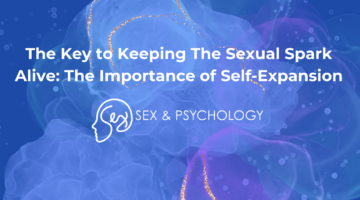4 Fascinating Things Scientists Have Learned About Love
February 8, 2017 by Justin Lehmiller
With Valentine’s Day just around the corner, a lot of folks have love on the brain—so, let’s talk today about the science of love. Here are four of the most fascinating things researchers have found by studying love relationships.
1.) We lie to ourselves about the ones we love. People have a tendency to idealize their romantic partners—to think of them as being better than they really are in some way, like thinking that your partner is the absolute best romantic partner anyone could ever have. Scientists refer to these beliefs as “positive illusions” and, believe it or not, these inaccurate beliefs are actually beneficial for our relationships in many ways. You can learn more about positive illusions in this video.
2.) Our body states synchronize with those of our loved ones. Several studies have found that physiological synchrony occurs between people who share deep emotional attachments. For instance, research has found that when couples gaze into each other’s eyes, their heart and breathing rates become more similar; however, no such synchrony occurs when people look into the eyes of a stranger.
3.) Viewing a photo of someone you love intensely can reduce feelings of physical pain. In a 2010 study, researchers put college students involved in intense love relationships into fMRI machines, where they were shown various images while being exposed to a painful physical stimulus. It turned out that seeing images of one’s partner reduced self-reported feelings of pain and, further, that this reduction in pain was associated with activation of the brain’s reward processing regions.
4.) We grow to look like our lovers over time. Research has found that when looking at photos of long-term married couples vs. two people who had been randomly paired, people can pick out the married couples at levels greater than chance. Why? It appears to be because the married couples look more alike. It’s thought that not only do we tend to select partners who look similar to us, but that we grow to look more alike over time due to empathy: couples frequently share emotional states that lead to similar patterns of facial muscle activation, thereby producing similar patterns of wrinkles on our faces.
Want to learn more about Sex and Psychology ? Click here for previous articles or follow the blog on Facebook (facebook.com/psychologyofsex), Twitter (@JustinLehmiller), or Reddit (reddit.com/r/psychologyofsex) to receive updates.
Image Source: 123RF.com/Oleksii Hrecheniuk
You Might Also Like:

Dr. Justin Lehmiller
Founder & Owner of Sex and PsychologyDr. Justin Lehmiller is a social psychologist and Research Fellow at The Kinsey Institute. He runs the Sex and Psychology blog and podcast and is author of the popular book Tell Me What You Want. Dr. Lehmiller is an award-winning educator, and a prolific researcher who has published more than 50 academic works.
Read full bio >


